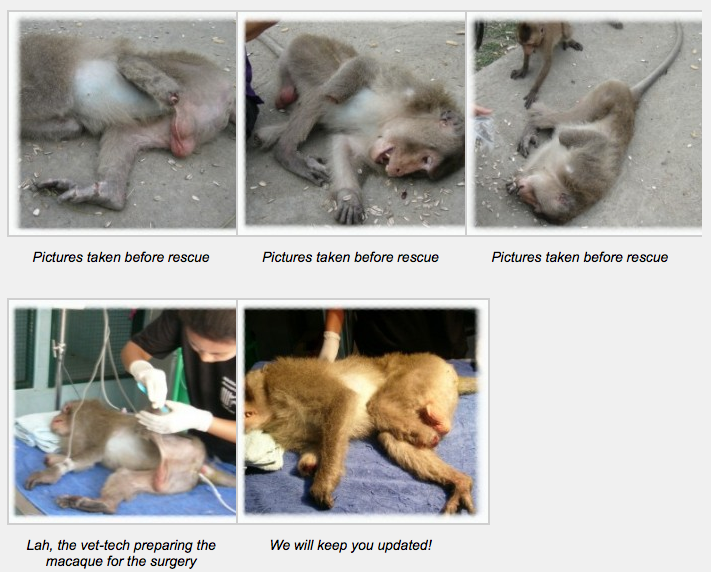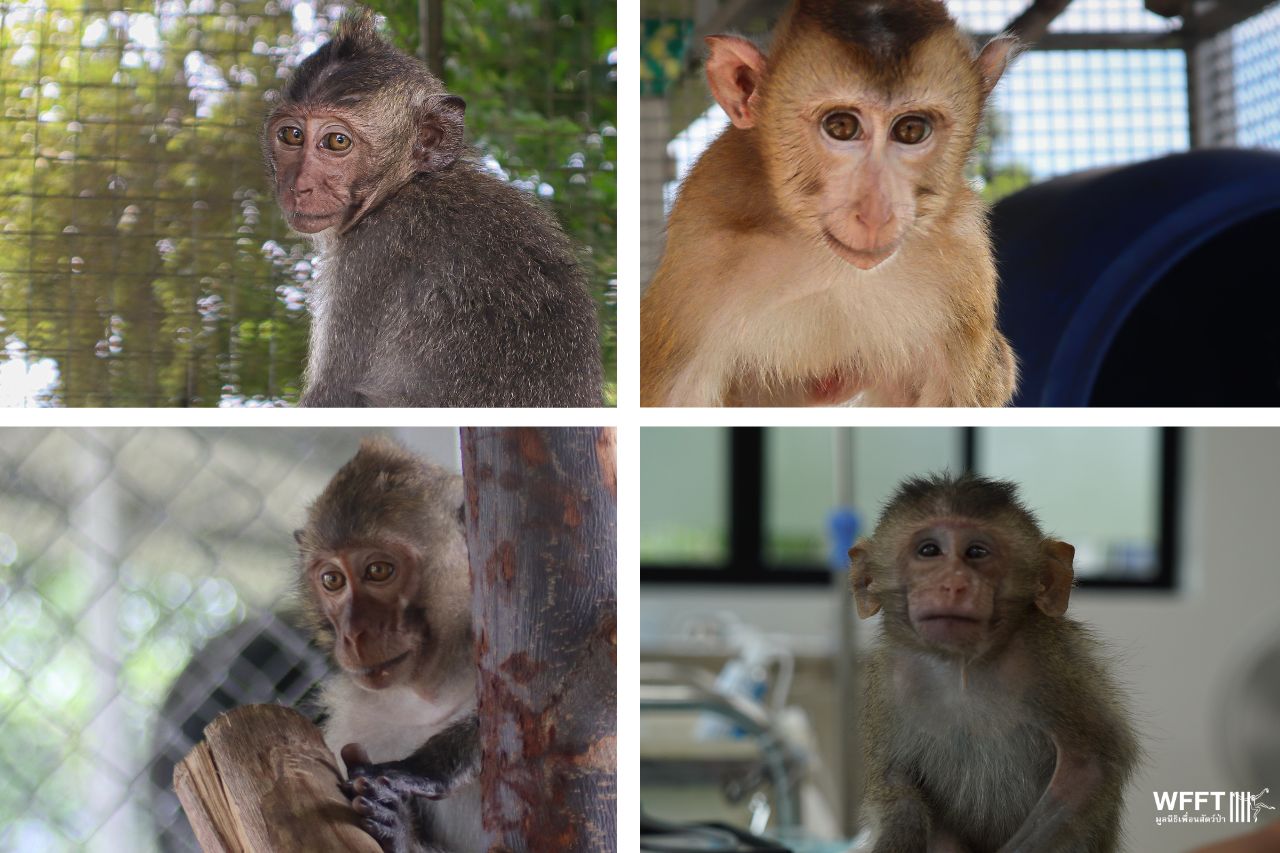The first side enclosures as part of our new coconut monkey project have been completed, and six rescued macaques have moved in.
Macaque gets arm and leg chopped off, still survives for 2 weeks!
More and more complaints have been coming in about Burmese and Cambodian factory workers torturing and killing macaques in and around Bangkok.
One of the last complaints was send in to the Department of National parks regarding a macaque on the outskirts of Bangkok who lost a part of both an arm and a leg. The missing parts of his limbs were chopped off by a machete and became infected open wounds.
Although crippled and used to being around people the monkey could not be caught. All together it took almost a week to get close enough, but on the 10th of December Edwin was able to get close enough in the dirty swamp to dart the unfortunate macaque.

The rescue team was called to rescue a monkey seen on the outskirts of Bangkok at a semi-forested area set amongst a background of factories, litter and sewage. The monkey was assumed to have been electrocuted on power lines around the factories and was missing the end of two limbs. On arrival we caught a short sight of the monkey, a large male long-tailed macaque, lying on the ground eating, but losing condition and definitely in a certain amount of pain. His right fore arm had been amputated above the wrist and his left hind leg amputated above the ankle joint. Closer inspection revealed scars from deep cuts on his right foot and very sharp bone ends emerging from his left leg. He had been in this condition for around two weeks already, and had somehow managed to fight off a fatal infection in the rotting environment in which he lived.
The unfortunate beginning to the story was that as we prepared to immobilize him, his fear took hold and he darted for the cover of the surrounding forest – very ambulatory on only two limbs! The search was carried out until dusk at which time we realized that even if we were to see him and dart him, in this environment, he would most likely run deeper into the marshes and potentially drown in the swampy grounds. The attempt was called off and planned for the following day.
The next few days saw the team head back to the site to re-attempt the rescue, only to find that he was becoming smarter and more scared and glimpses of the monkey were becoming fewer and fewer. He knew the ground far better than we and knew how to evade us. Several attempts were made to immobilize him but his unexpected speed in the marshes made capture difficult. On the fourth day we arrived at 7.30am, prepared to spend a whole day waiting, but not a single sighting was made. Our attempts were made all the more difficult by well meaning locals, keen to help but only causing more hindrance by smashing through the bushes and making far too much noise.
On the final day, two days after the previous rescue to give the animal a break, Edwin visited the site on his own, without the rescue team and with fewer locals to get in his way. Possibly the monkey was recognizing the sound of the rescue van arriving, so in his small quiet car, there was less to incite fear. Within minutes of arriving, the monkey was sighted and quickly darted. He did not manage to travel far before sleep set in and he was caged and transported back to the wildlife rescue center.
Once at the rescue center, he was fed well and prepared for surgery the next day. The following morning, he was anaesthetized, started on IV fluids and intravenous antibiotics and surgery was performed to amputate the left hind leg up to the knee joint. The exposed bone end had been sharply cut and remained exposed with a deep bone marrow infection likely. The forelimb was healing somewhat but despite showing granulation tissue cover a week previous, there was evidence that it too was not healing well and had a deeper infection.
Despite the local’s concern that the monkey had been electrocuted, the reports from the locals that Burmese and Cambodian factory workers were killing and eating monkeys suggested that his wounds were more likely to have been caused by knife wounds, such as a machete. There was no evidence elsewhere on his body of electrical burn wounds, though other cuts had been observed. If he had been electrocuted, his bone ends would not be left so sharply edged and the bone would still be intact – dead bone does not just fall off with dead skin. So the evidence suggested more malicious human intervention to cause his injuries.
The question obviously arises as to why we spent so much time trying to catch the monkey and help him when he could easily have been euthanized – there is an overabundance of wild macaques around Bangkok and he was not an endangered species. But as a wildlife rescue unit, concerned about caring for wildlife harmed by human beings, it seemed negligent to take away the life from this animal who had been injured by human intervention but still had a will to live. Our aim is to assist his healing in the best possible manner, improve his strength and eventually release him back to his group under close supervision.
Lah, the vet-tech preparing the macaque for the surgery pictures taken before rescue
We will keep you updated!




